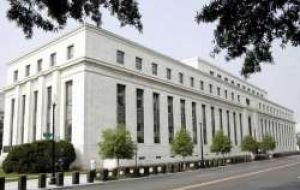MercoPress. South Atlantic News Agency
Fed admits high inflation but leaves rates unchanged, 2%
 One dissenting vote in favour of rising interest rates
One dissenting vote in favour of rising interest rates The Federal Reserve decided on Tuesday to keep the key interest rate unchanged at 2% in support of a slowing economy threatened by inflationary pressures and the ongoing housing contraction and high fuel prices.
The decision of the Federal Open Market Committee had an only dissenting vote which favored an increase. The FOMC release says that economic activity expanded in the second quarter, partly reflecting growth in consumer spending and exports, but "labor markets have softened further and financial markets remain under considerable stress" which added to "tight credit conditions, the ongoing housing contraction, and elevated energy prices are likely to weigh on economic growth over the next few quarters". The Fed feels that over time "the substantial easing of monetary policy, combined with ongoing measures to foster market liquidity, should help to promote moderate economic growth". The release points out that "inflation has been high, spurred by the earlier increases in the prices of energy and some other commodities, and some indicators of inflation expectations have been elevated", however the FOMC expects "inflation to moderate later this year and next year, but the inflation outlook remains highly uncertain". Finally although downside risks to growth remain "the upside risks to inflation are also of significant concern to the Committee" and therefore the FOMC will continue to monitor economic and financial developments and will act as needed to promote sustainable economic growth and price stability. Voting for the FOMC monetary policy action were: Ben S. Bernanke, Chairman; Timothy F. Geithner, Vice Chairman; Elizabeth A. Duke; Donald L. Kohn; Randall S. Kroszner; Frederic S. Mishkin; Sandra Pianalto; Charles I. Plosser; Gary H. Stern; and Kevin M. Warsh. Voting against was Richard W. Fisher. Data published on Tuesday showed that the US services sector contracted again in June but not by as much as experts had forecast. Second-quarter GDP growth was a stronger-than-expected 1.9%, on an annual basis, although this was aided by government stimulus measures. Unemployment, meanwhile, has risen to a four-year high while consumer spending is weak, rising only 0.2% in June. The Institute for Supply Management's non-manufacturing index hit 49.5 in July, above June's 48.2 figure and better than the 48.5 forecast. With any figure below 50 representing negative growth, the data reflects the fragility of the economy which relies on services for 80% of total output. Analysts said the evidence pointed to a shallow rather than a severe recession. While the sector shrank overall, some areas recorded growth including entertainment, recreation, hotels, restaurants, utilities and scientific and technical services. Meantime the US unemployment rate climbed to 5.7% in July, the highest in more than four years. Firms cut workers for a seventh month in a row, but the losses were fewer than analysts had been expecting. The economy lost 51,000 non-farm jobs the US Labor Department said, the same as the newly-revised figure for June, when unemployment was at 5.5%. US companies have been reluctant to add staff amid higher oil and food prices, and slowing economic growth. The only major sectors showing job creation were government, hospitality, education and health services. About 22,000 jobs went in the construction sector while factories cut 35,000 jobs.




Top Comments
Disclaimer & comment rulesCommenting for this story is now closed.
If you have a Facebook account, become a fan and comment on our Facebook Page!